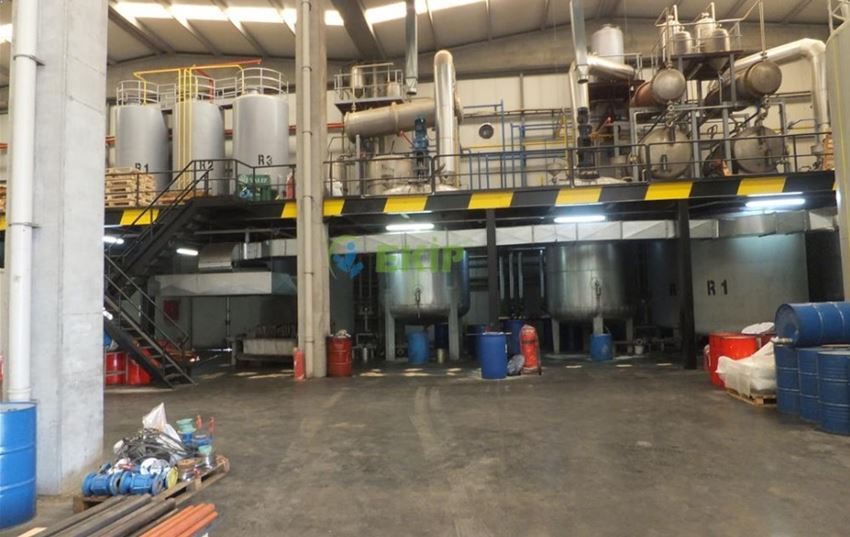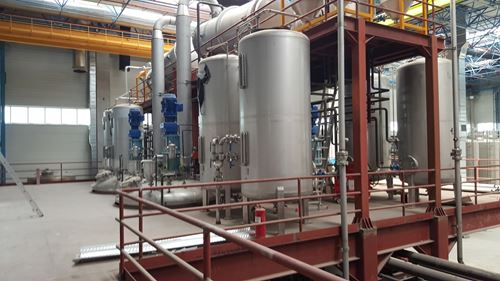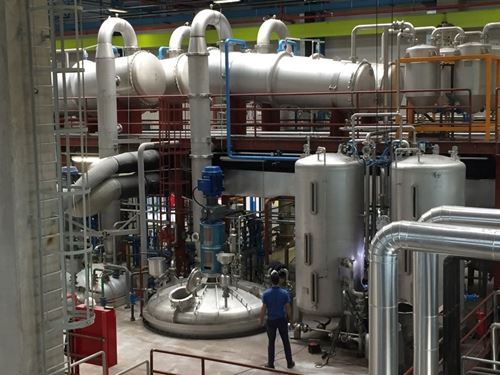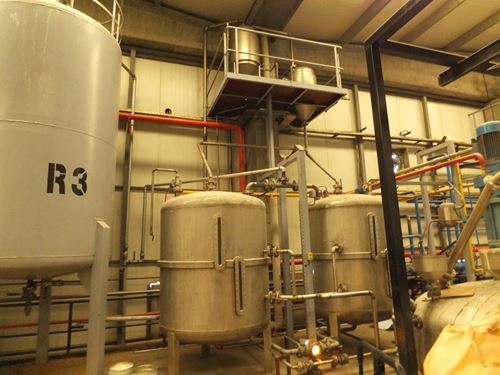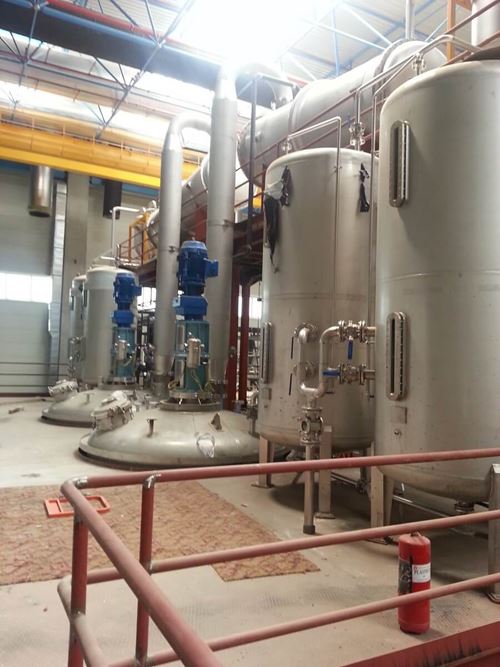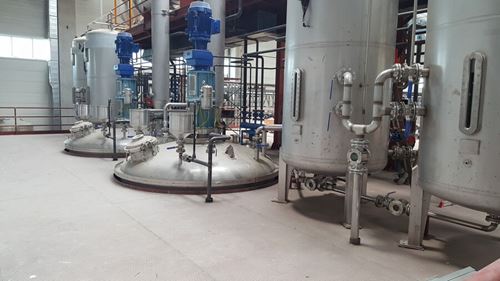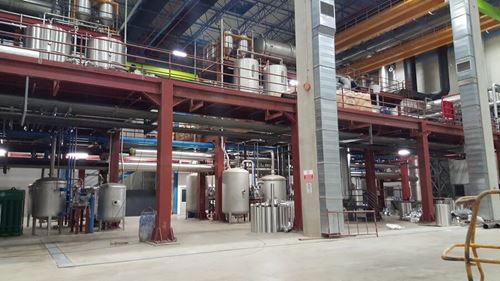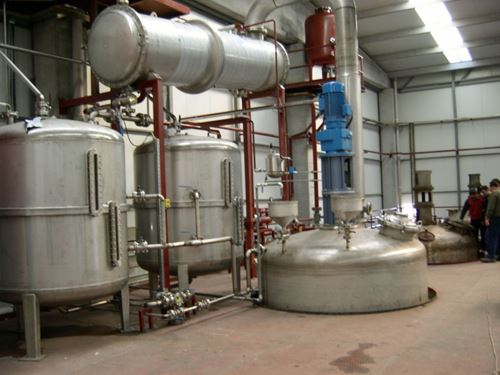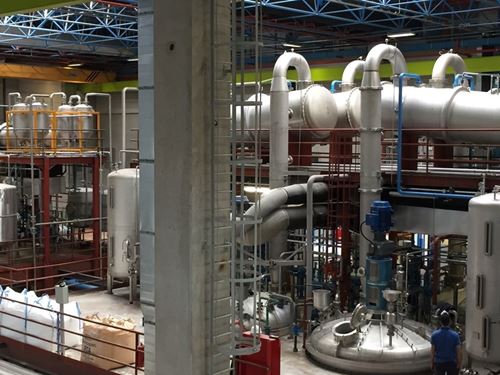O.T.P (DIOKTIL TEREFTALAT) PLASTICIZER |
|
D.O.T.P is a terephthalate plasticizer and has a very different structure in structure as seen from its open formulas from orthoftalate esters such as D.O.P, D.I.O.P, D.I.N.P, D.I.D.P. This branched structure of D.O.T.P provides D.O.T.P many excellent features not found in other plasticizers.
|
| |
FLYING OF PLASTICIZERS |
|
The volatility of plastisols (mixture of P.V.C and plasticizer) during the fusion process is determined by weight loss at various fusion temperatures. When the table on the side is examined, it is seen that DOTP has the least volatility. The volatility of D.O.P is seen to be about twice as much as the others. |
|
VISCOSITY |
|
The viscosities of plastisols are very important in the production of P.V.C-based plastics. In order to achieve the desired standard, plastisol must be given to production with the specified viscosity. It is also a fact that the viscosity of plastisol prepared with an ordinary plasticizer such as D.O.P starts to change rapidly from the moment it is prepared. For this reason, constant viscosity determinations and adjustments cause time loss and if not done, large production waste. On the side, time-varying viscosity curves of plastisols prepared with plasticizers such as D.O.P, D.O.T.P, D.I.N.P, D.I.D.P are given. Measurements were made under 23 c for three weeks. As a result, the most stable viscosity was observed in plastisol prepared with D.O.T.P. The formulas of plastisols are indicated on the side.
|
The viscosities of plastisols are very important in the production of P.V.C-based plastics. In order to achieve the desired standard, plastisol must be given to production with the specified viscosity. It is also a fact that the viscosity of plastisol prepared with an ordinary plasticizer such as D.O.P starts to change rapidly from the moment it is prepared. For this reason, constant viscosity determinations and adjustments cause time loss and if not done, large production waste. On the side, time-varying viscosity curves of plastisols prepared with plasticizers such as D.O.P, D.O.T.P, D.I.N.P, D.I.D.P are given. Measurements were made under 23 c for three weeks. As a result, the most stable viscosity was observed in plastisol prepared with D.O.T.P. The formulas of plastisols are indicated on the side.
|
PHYSICAL PROPERTIES OF PLASTISOLS |
When the physical properties below are examined, it is seen that D.O.T.P is the best in terms of physical and permanent properties. |
| D.O.P | D.O.T.P | D.I.N.P | D.I.D.P | Plasticizer Concentration For Same Touch | 60 | 65 | 68 | 66 | MECHANICAL FEATURES | Tensile Strength | 16 | 16,5 | 14,5 | 14,7 | mPa(psi) | (2,320) | (2,393) | (2,103) | (2,291) | % elongation | 389 | 400 | 395 | 405 | yırtıma muk. M/mm | 58 | 58 | 52,4 | 54,6 |
PERMANENCE | % Soapy Water Loss | 0,5 | 1 | 0,9 | 1 | % Oil Extraction Loss | 9 | 15,6 | 15,5 | 15,7 | % Hexane Ex Loss | 24 | 33 | 33 | 32 | % Activated Carbon Loss | 9 | 3,7 | 3,8 | 2,2 | LOW TEMPERATURE FLEXIBILITY (BENDING MODULE C) | 35000 psi | -30 | -31 | -29 | -30 | 135000 psi | -46 | -50 | -44 | -47 |
|
|
|
D.O.T.P (DIOKTİL TEREFTALAT) TECHNICAL SPECIFICATIONS |
|
GENERAL
| Molecular Weight | 390,57 | Closed Formula | C24 H 38 O 4 | PHYSICAL | Form | Sıvı | Color | BERRAK SARIMSI YEŞİL | Refractive Index n 25 ºC/D | 1,4867 | Acidity (as phthalic acid), weight% | Max.0,01 | Specific Density 25 ºC/25 ºC | 0.985 | Boiling point 760 mm Hg , ºC | 400 | Freezing point,ºC | -51 | Solubility in Water (20 ºC,g/L ) | 0,004 | VISCOSITY (ASTM D 445), Cp MODULE C) | -17.8 ºC da | 2500 | 0 ºCda | 410 | 25 ºCda | 63 | 100 ºCda | 5 |
STABILITY
| Boiling Water Stability (% hydrolysis after 96 hours) | 0.04 | Heat Stability (at 205 ºC for 2 hours), Acid% | 0.06 | ELECTRICAL | Volumetric Resistance, ohm-cm ( ASTM D 257 ) | 3,9x10 12 | Dielectric Constant, 1 MHz ( ASTM D 150 ) | 4,6 | Distribution Factor, 1MHz (ASTM D 150 ) | .0 ,1x10 -2 |
|
|
|
D.O.P (DIOCTYL PHTHALATE) TECHNICAL SPECIFICATIONS |
|
GENERAL | Molecular Weight | 390,57 | Closed Formula | C24 H 38 O 4 | PHYSICAL | Form | Sıvı | Color Pt-Co | 15 Max | Refractive Index n 25 ºC/D | 1,487 | Acidity (as phthalic acid),% wt | Max.0,01 | Specific Density 20 ºC/20 ºC | 0.983-0,985 | Boiling point 760 mm Hg , ºC | 384 | Freezing point , ºC | <-50 | Flash Point, Open Cup, ºC | 216 |
|
D.O.P./ D.I.O.P./ D.I.D.P./ D.I.N.P./ etc. called plasticizers. Such substances are chemical compounds used as plastic raw materials to add plasticity to plastic. The main raw materials used during its manufacture:
A-1 Phthalic Anhydride, Phthalic Acid, Tetra Phthalic Acid, Phthalates such as Diethyl Dimethyl, Maleic Acid etc. as B - 2 Ethyl Hexanol, Iso Octanol, Decyl Alcohol, Iso Decyl Alcohol, Nonyl Alcohol, Buthyl Alcohol, etc. Various types of chemical alcohols such as. Both types of substances are taken into the reactor boilers and they are chemically reacted and converted into products by means of catalyst, auxiliary chemicals. Due to the chemical reaction of the manufacturing process, the reaction times can be extended and shortened according to the quality and quality of the raw materials used during manufacturing, and the reaction that occurs at high temperatures varies between 90% and 75% of the total amount of materials used from raw materials. The materials required for the production of 100 kg of goods in boilers of different sizes and volumes are between group A substances and between 40 and 55 (B) group materials between 65 and 80 kg. And by increasing and decreasing the usage rates of A and B group raw materials, different quality and quality products are obtained. Consequently, up to 25% waste and materials used in the production of plasticizers Different amounts of efficiency are obtained between 75% and 95% of the total. |
 English
English